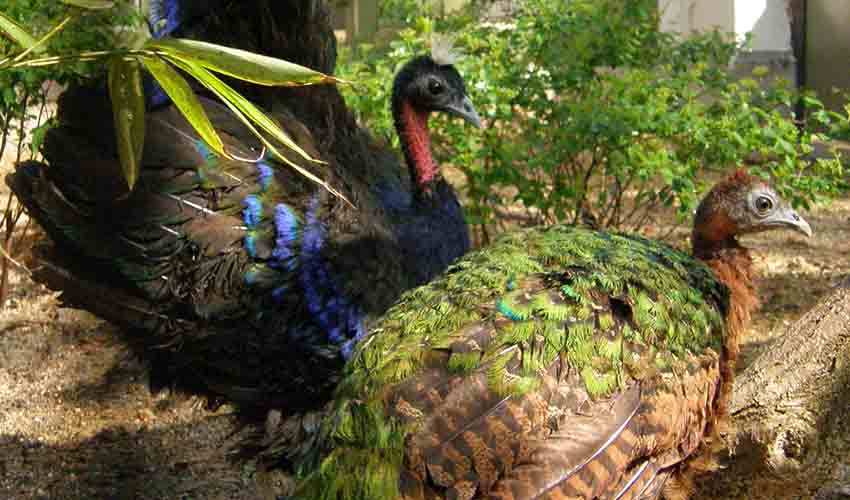Unlike its flamboyant cousin, the Indian peafowl with its sweeping, iridescent tail, the Congo peafowl is far more subtle and secretive, perfectly adapted to the dense rainforests of the Congo Basin. It was only scientifically described in the 1930s, making it one of the last large birds to be discovered, which adds to its air of mystery.
What makes the Congo peafowl so distinct is its unique mix of features. The male has dark, glossy blue-green feathers with a metallic sheen, a short tail, and a striking bare red patch of skin around its eyes and neck, while the female is smaller with more brownish, camouflaged plumage. Unlike the showy peacocks that fan out their tails in dazzling displays, the Congo peafowl’s courtship is more understated but still elegant—males fluff their body feathers, call softly, and strut in front of females. Their appearance and behaviors reflect their rainforest home, where blending in is more useful than showing off.
The Congo peafowl is also remarkable because it is the only peafowl species native to Africa. Its discovery was groundbreaking, as it provided scientists with a missing evolutionary link between the flashy peafowls of Asia and the guineafowl of Africa. In a way, it represents a living bridge between two bird families, making it a key piece in the puzzle of bird evolution. This special status makes it not just rare but scientifically important.
Unlike its noisy Asian cousins, the Congo peafowl is relatively quiet, which makes it even harder to spot in the dense jungle. But when it does call, it makes a deep, booming sound that echoes hauntingly through the forest.
Distribution
 DR Congo (Kinshasa)
DR Congo (Kinshasa) Official estimate
Official estimate
Anything we've missed?
Help us improve this page by suggesting edits. Glory never dies!
Suggest an editGet to know me
Terrestrial / Aquatic
Altricial / Precocial
Polygamous / Monogamous
Dimorphic (size) / Monomorphic
Active: Diurnal / Nocturnal
Social behavior: Solitary / Pack / Flock
Diet: Carnivore / Herbivore / Omnivore / Piscivorous / Insectivore
Migratory: Yes / No
Domesticated: Yes / No
Dangerous: Yes / No




